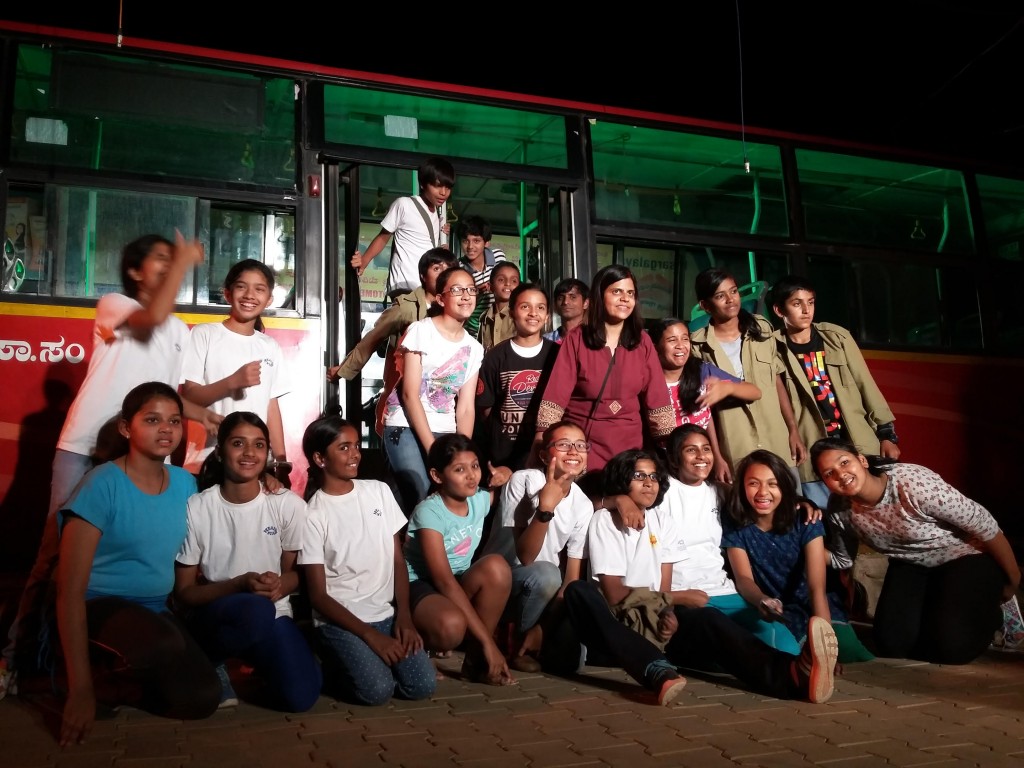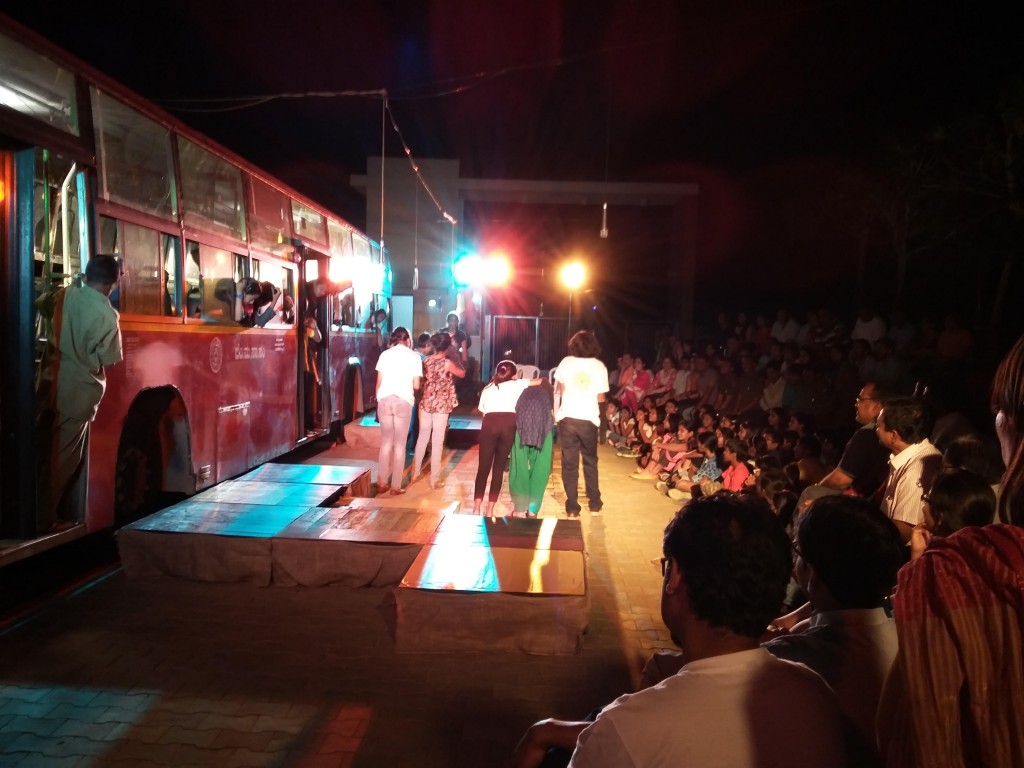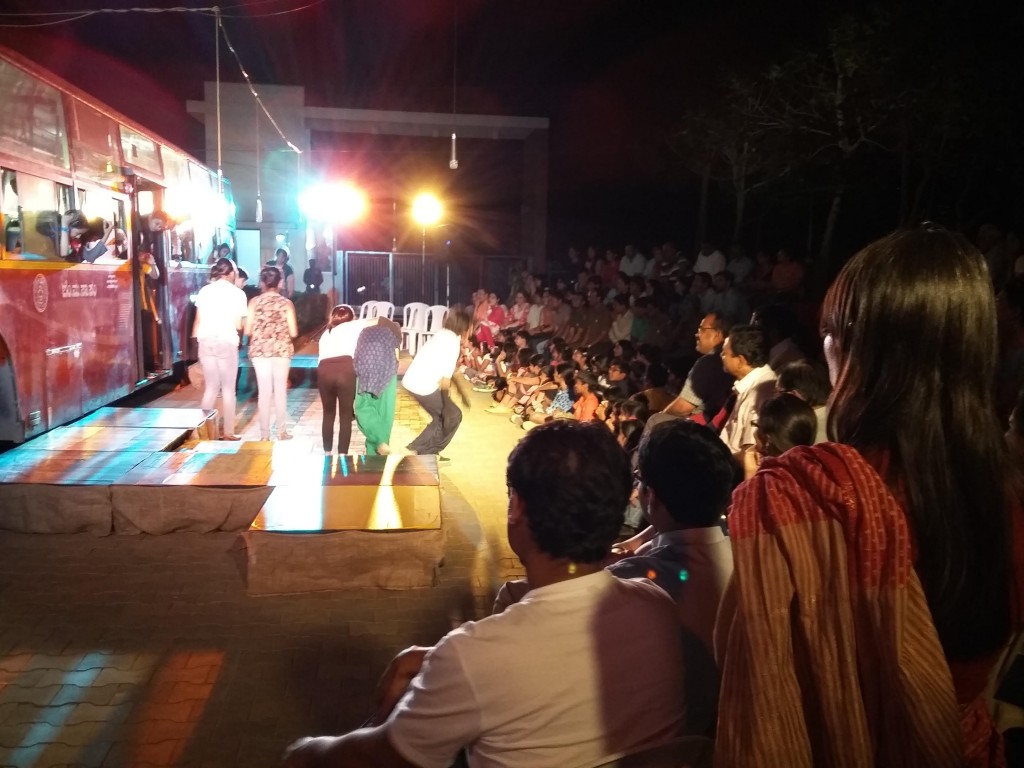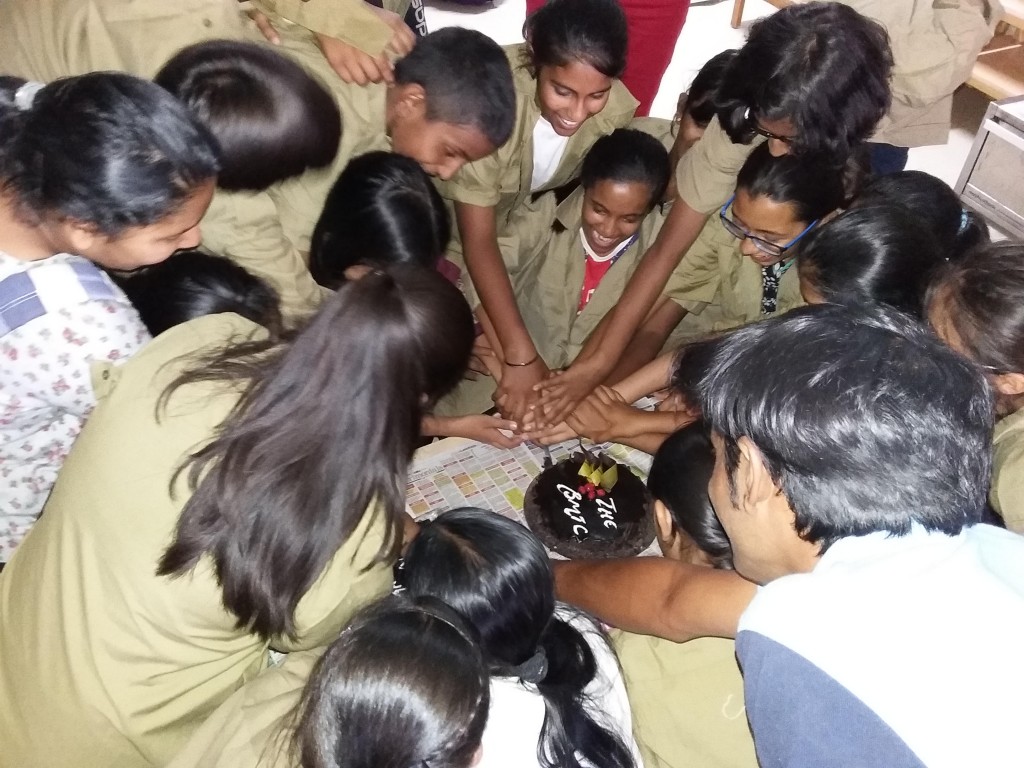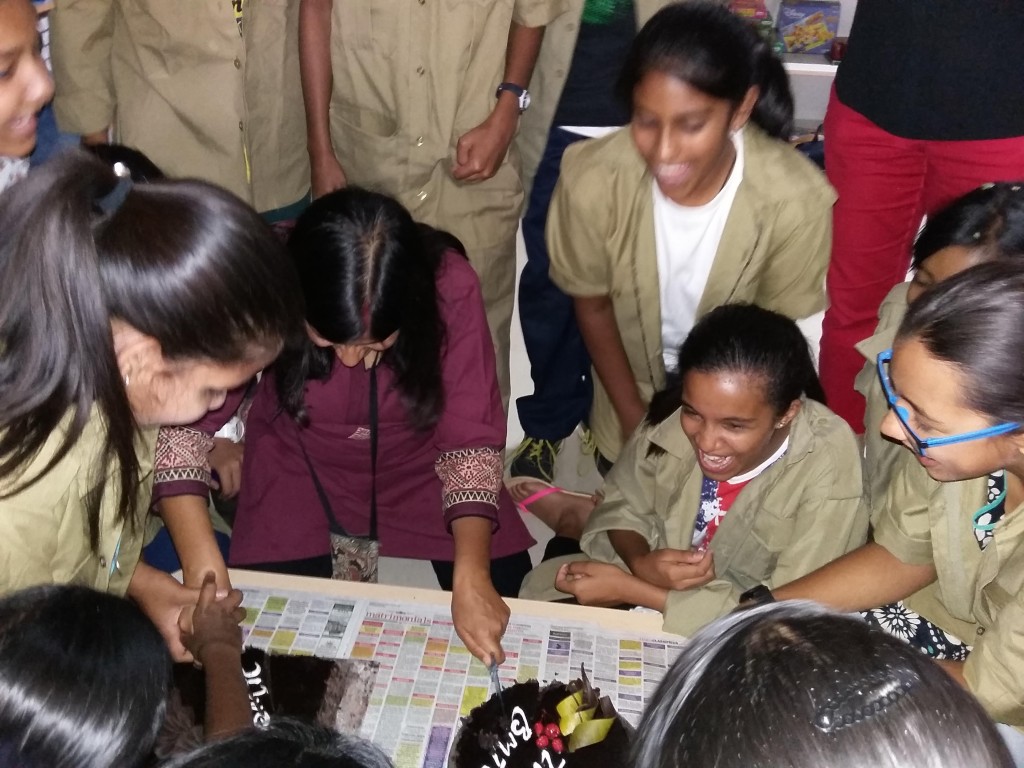Arts & Education – Process versus Outcome
Literature, music and the arts, all are necessary for the development and flowering of a student to form an integrated total personality.- Rabindranath Tagore
THE BMTC
I got an opportunity to attend a play that was presented by the Head Start school children in Cubbon Park, Bangalore. The multilingual (Kannada, Hindi and English) play was about the Bangalore Metropolitan Transport Corporation (BMTC) buses enacted by a young group of children called ‘The BMTC’. This play is directed by Samta and Ashwini, theater facilitators of the school. A synopsis of the play can be viewed on the following link as that shall not be part of this piece: https://headstarteducationalacademy.edu.in/?p=4130
What intrigued me to write the following was actually something that was said towards the end of the play when the children were acknowledging all members involved in the making of it. One girl said, ‘We thank the BMTC officials, drivers and conductors for taking out time to share their views during the interviews conducted by us’ (transcribed). The play was in fact wonderful and did initiate in developing a perspective on the lives of drivers and conductors and also acted as a window to the city and its people. The children enacted the play flawlessly; they clearly had imbibed the characters. These statements are important in summarizing how well the play was done. But one needs to understand that these statements are only the outcome of the play. The process that was involved in the making of this play is inevitably the result of the outcome and therefore this process is equally important to deconstruct. The statement which was made during the acknowledgements, I felt was actually a very loaded statement that just floated by when voiced. Within that statement was a small window into the process, even possibly the reason why the outcome had left a positive impact. Not as a drama critic but a pedagogue I would like to deconstruct this process and also state the interrelations between art and education and art being more about the process than the outcome.
Head Start school uses BMTC buses to pick and drop the children in the mornings and afternoons respectively. Therefore it is the BMTC bus drivers and conductors that the children interact with during their rides. As soon as the children leave their homes for school the first set of adults they meet are these drivers and conductors. The school believes that they too are educators and therefore were called in for meetings to discuss the importance of their roles in the lives of the children. In fact one parent once shared how excited his child would be when a particular conductor would be there in the bus in the morning and how he would miss him on days he would not come. That in itself shows the impact the drivers and conductors have on these children. These meetings sparked an idea of doing a play in relation to bus experiences (at first) among the theater facilitators. They shared the idea with the children and the children were asked to do improvisations connected to buses. As shared by the facilitator initially the children were not quite able to bring about variety in their improvisations. They mainly revolved around situations such as thefts, accidents, etc. This is when the facilitator decided to give them a flavor of the local buses of Bangalore. They all visited the BMTC main office, met officials, interviewed drivers and conductors, travelled in the buses, visited the Shantinagar bus stand and more. Therefore the children learnt to develop questionnaires, along the process learnt to raise questions on the spur of the moment and also documented their findings once they got back. There was a strong element of research as part of the making of this play that the children got an opportunity to experience and learn from.
While it all began with the BMTC bus drivers and conductors what happened down the lane was that the children also started understanding the city and its people. These children had had an exposure of only a certain space of the city, a certain life a certain perspective but through the exploration of the BMTC they also ended up exploring the functioning of the city, the dynamics of the people and language. They understood the influx of people into this city from other states and the impact it has made at different levels such as language, population, needs and more. Even aspects like weather conditions in terms of its impact on the city people versus the drivers and conductors, the impact on roads and its effects on the traffic pile ups and over all the weather conditions that have drastically changed in the city over time. All of this came through from the discussions they had with the drivers and conductors during their research. It was almost like the members of the bus (drivers and conductors) who have been travelling in it around the city for years actually can see the city through the bus windows like a movie. One can see how much history, culture and experience each individual holds which not only gives that person’s perspective on various aspects but also gives a glimpse of the world through that person’s eyes. So what began as a story of understanding and exploring the BMTC turned out to be much more that also probably helped the children understand their identity and role in this space.
The children through meetings and visits started understanding that perspectives are not one dimensional. One’s perspective of a situation can completely be different from the perspective of another of the very same situation. A good example of this point was shared by the facilitator. During the interviews the children posed questions to the drivers and conductors who travelled together in the same bus for which the responses they got differed to a large extent. On asking them about their point of view on being stuck in traffic jams the driver said it is a painful experience for they are stuck in one place, cannot move for long durations and if the sun is beating down on him it can become excruciating. The conductor on the other hand said that traffic jams give him an opportunity to log all the tickets he has charged so it works well for him. Of course the passengers gave yet another perspective. In another example, while the children were sitting with a lady of the complaints department they witnessed a person whose complaint was that he had been charged Rs.10 extra which he requested to be returned. There were some children who found it rather awkward initially that a person travelled the distance to meet the lady for such a small amount of money. Later when the children went back and had discussions is when they understood the value of money for people. Such experiences and discussions helped the children to truly understand how perspectives can vary and in fact in the larger scheme of things develop a sense of empathy. To imbibe this idea of empathy leads the child to always be aware of or at least would try to be aware of the views of others before taking any action or making any judgments.
The visits like that of the Shantinagar bus stand or travelling in the buses gave the children a great sensorial experience as well. Since these children were there with an agenda their senses were heightened in a focused manner. They were trying to absorb every sound, light, colour, texture, taste, culture, etc. that they possibly could. It is said that the arts help in the refinement of the senses and such experiences clearly show how.
Post research the making of the play began its process. The director/facilitators shared that the casting took place in a rather organic fashion. The children during their research were impacted by certain people that they started to enact during improvisations. Of course the improvisations by now had much more variety and depth in terms of situations, dialogues, characters and more. Children were not told to enact particular characters but rather they chose their own characters which could result in one of the outcome statements like, ‘children had imbibed the characters’. The process of casting was so natural that the children were able to not just live and breathe the characters but also further develop the characters over time.
This play interestingly has no script. The children as they chose their characters and events/situations they wanted to enact, similarly the dialogues flowed that came naturally to the chosen characters and chosen events/situations. As shared by the facilitator the children during their initial performances were more hesitant and focused on just finishing the play but over time they not only became more comfortable and confident but also ended up enacting actions and delivering dialogues on the spur of the moment if they felt like it. What language to do the play in, did involve an interesting debate. On the one hand since the play was about BMTC drivers and conductors it seemed inevitable that the script should also be in language/s they use but on the other hand since there was no script and the children were creating the dialogues it was important for them to deliver in a language they were comfortable in. From a pedagogical perspective I felt that it was wonderful that the second choice was taken into consideration. Since the process was so organic in nature in terms of choosing characters and choosing the situations to enact, it would have just led to inconsistency if at that point the children would have been forced to deliver in a language that did not come naturally to them or to choose children to enact a character just because a child is comfortable in a particular language. Such decisions make artists become pedagogues and I believe that that is exactly what the role of the facilitator here was.
The play was performed multiple times in various settings. These performances also lead to various experiences that the children will probably draw from throughout their life. Since 6th and 7th graders were working on this play together there was a lot of friction among them initially. They would mostly clump into smaller groups with their own friends or with their own classmates. It was only through various techniques used by the facilitator and the fact that the children were working towards creating something of their own is what got them to unite. Venues like the one in Cubbon Park did not have well equipped washrooms, or were far from their stage area and there were no designated changing areas. Such challenges not only made the children bond but also helped them become aware and sensitive towards varying spaces and facilities. The play was also covered in the newspaper and at that point the facilitators made it a point to have a discussion with the children that they should not merely look at this as coverage but rather understand that they are creating awareness among the public about this play and that holds a certain level of responsibility.
What was the structure of the play, the techniques used, the plot, etc. are all something that I believe one should go and witness for oneself. All that was shared here was what happened behind the curtains – the process. It was not just a play but the coming together of children to create something that did not exist. It was about getting to know others and in turn also knowing oneself better. It gave the space to question, debate, explore and most importantly there was freedom that was always underlining the process. I believe this play was a fine example to demonstrate the importance of arts in education. It demonstrated how this one play helped in integrating various skills of research, communication, documentation and ideation as well as personality traits like empathy, decision making, responsibility which leads to the development of the child’s Self i.e. his/her personality. Arts cannot be analysed based just on the outcome of a painting made or a dance performed or in this case a play. It is about the process and therefore as educators it becomes important to always peep behind the curtains. One should also develop the ability to let the child free so that s/he can create. For creation to happen there can be no imposition on the child or else it just becomes a process of replication. If you, going forward, get an opportunity to see any form of creation by a child take a minute to think what must have been the processes involved, if you are not sure ask the child for s/he would be more than happy to share. Based on that observe the change that will come about in your response, from being an outcome driven response to a process driven response.
